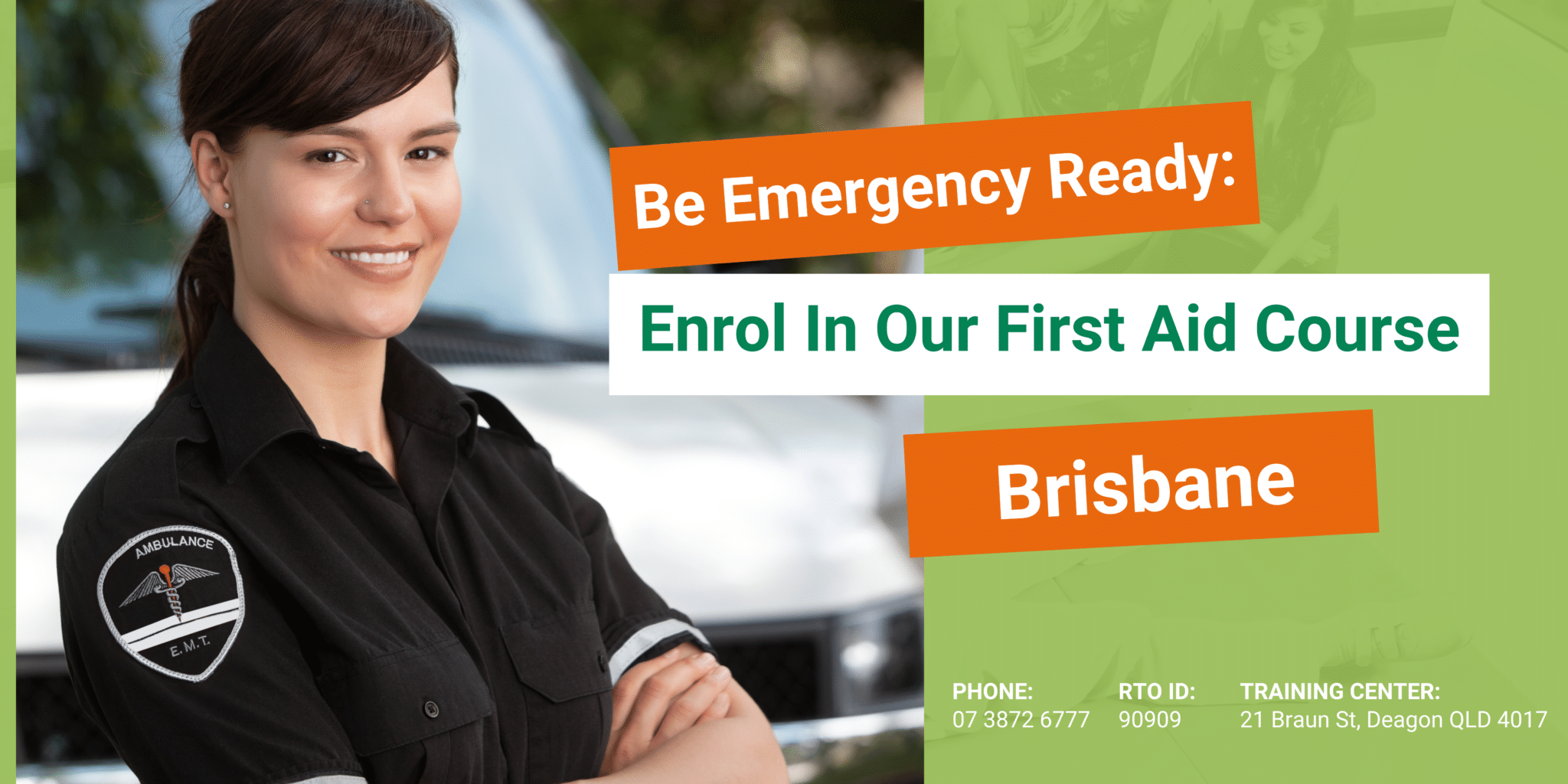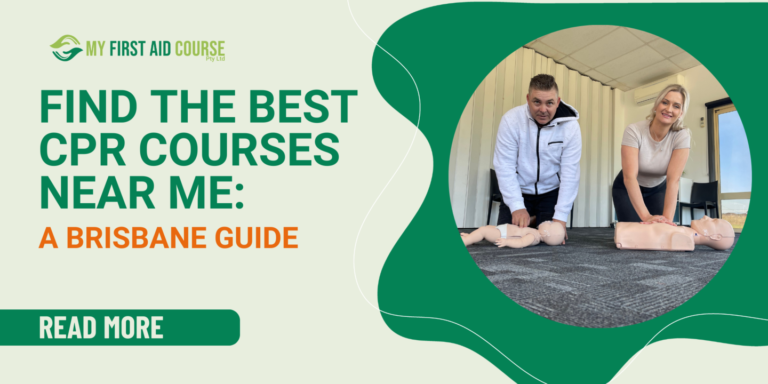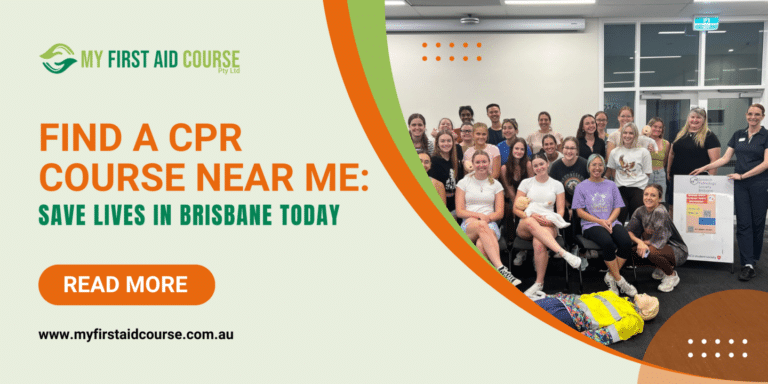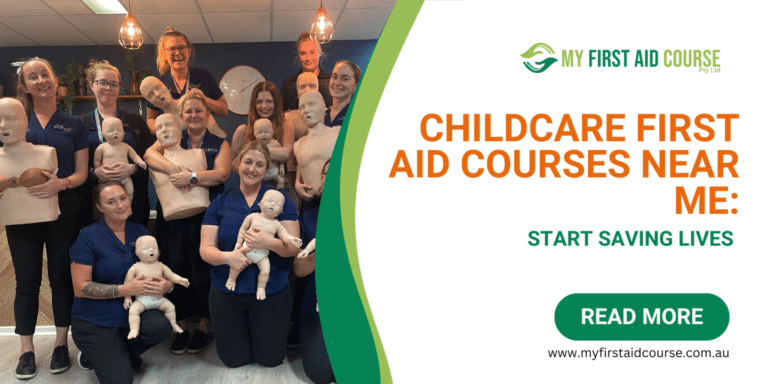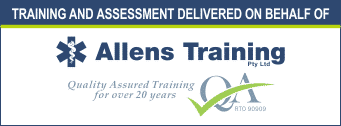Australia needs more of its citizens trained in first aid. Ever been caught in a moment where someone’s life hangs by a thread, and you wished you knew what to do? First Aid Course Brisbane might be the answer.
We’re not talking about becoming superhero medics. But imagine knowing just enough to make that life-saving difference when it counts most.
This isn’t your typical health class lecture – it’s hands-on learning that leaves an imprint. You’ll come out with skills like CPR mastery, wound care expertise, and emergency recognition acumen.
In this journey of discovery and empowerment, we’re diving deep into real-life situations where first aid can turn despair into hope. Discover the importance of the First Aid Course Brisbane. Ready to learn more?
Table Of Contents:
- Importance of First Aid
- Why Everyone Should Consider a First Aid Course
- Overview of First Aid Course in Brisbane, Australia
- Recognising Emergencies
- Assessing the Situation
- Basic Life Support
- Wound Care
- Burns Treatment
- Poisoning Management
- Fracture Management
- FAQs in Relation to First Aid Course Brisbane
- Why First Aid Course Brisbane is Your Essential Safety Net
Importance of First Aid
We all know how crucial it is to have a basic understanding of first aid, right?
No matter where you are in Brisbane – the bustling city center or out enjoying our beautiful countryside – knowing how to act during an emergency can mean the difference between life and death.
First Aid Course Brisbane doesn’t just give us skills; it builds confidence too. It lets us step up when needed most, rather than standing by helplessly.
Not only that, but for many professions here in Brisbane – from child care workers to construction teams – being able to provide first aid isn’t just helpful; it’s legally required.
In line with this commitment towards community safety and health, we’ve designed My First Aid Course Brisbane – as an interactive course covering a broad range of topics related to emergency health management.
The Need for First Aid Training
You never know when accidents will happen because they don’t come knocking on your door beforehand.
One minute, everything’s fine; the next, you might find yourself faced with a snake bite while camping at Moreton Island or dealing with choking incidents during Sunday barbecues.
Knowing how to react effectively can save lives and reduce recovery time dramatically.
That’s where our first aid courses come into play—they are geared towards making everyone capable of lending skilled help when necessary.
Brisbane’s Commitment Towards Community Safety
The beautiful city of Brisbane isn’t just about sunny weather and amazing beaches—it also boasts one of Australia’s strongest commitments towards promoting public safety through comprehensive first-aid education.
This dedication reflects not only within professional sectors requiring compulsory training but extends across all residents as well.
Our course aims to ensure everyone in Brisbane, from parents and teachers to fitness enthusiasts and outdoor adventurers, is equipped with the knowledge they need.
We’re not just teaching first aid here; we’re creating a city of lifesavers at First Aid Course Brisbane. So join us to learn one of our first aid training classes.
Not only will you learn something new, but who knows? You could save someone’s life one day because of it.
Key Takeaway:
Knowing first aid is crucial, no matter who you are or where you’re from. Whether strolling through Brisbane’s vibrant CBD or adventuring in the hinterland, being prepared for emergencies can save lives. Our course is designed to turn every Brisbanite into a capable responder when it matters most – we’re creating a city full of lifesavers. So why not join us?
Why Everyone Should Consider a First Aid Course
First aid course Brisbane is for more than just professionals or those working high-risk jobs. It’s for everyone, and here’s why.
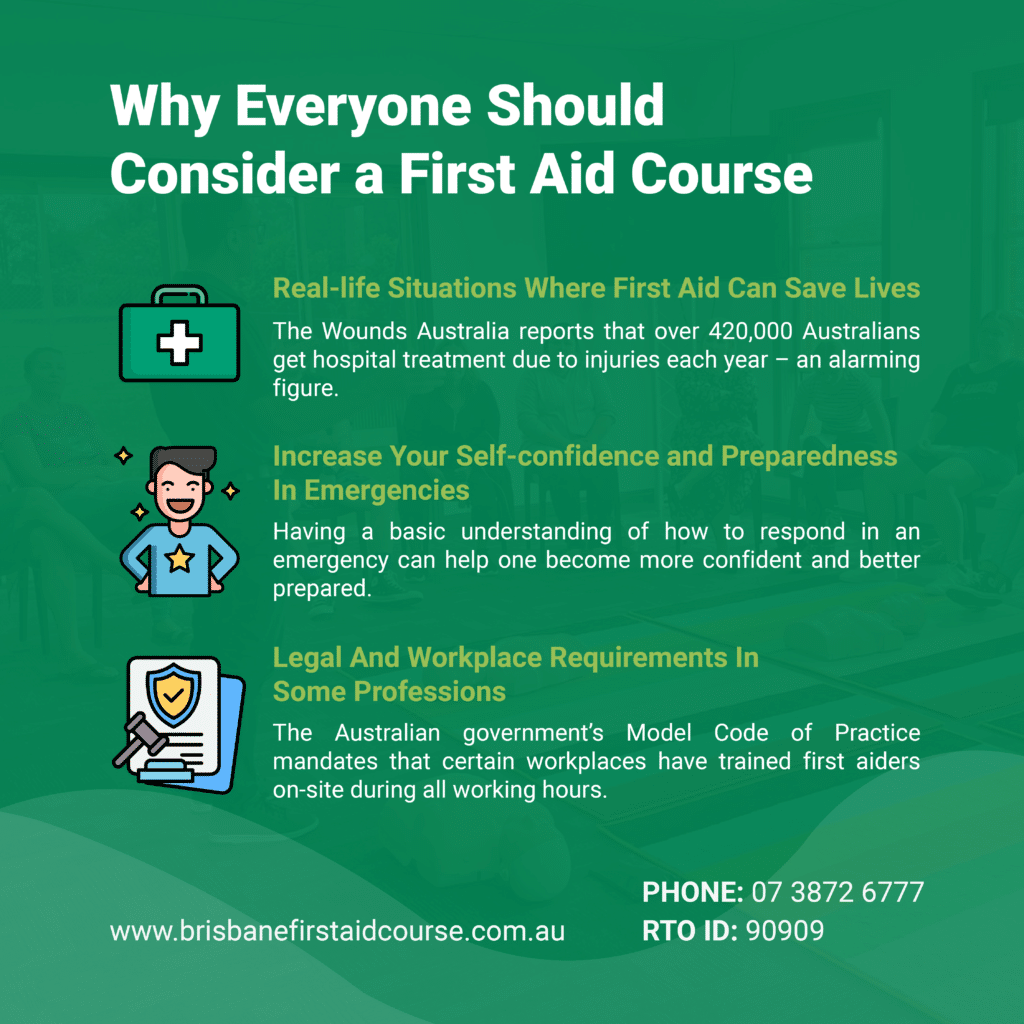
Real-life Situations Where First Aid Can Save Lives
We’ve all seen it on the news: Accidents happen every day. From road incidents to mishaps at home, emergencies are unpredictable but inevitable.
Being trained in first aid allows you to help out during these emergency situations.
The Wounds Australia reports that over 420,000 Australians get hospital treatment due to injuries each year – an alarming figure.
Imagine if more people knew how to give immediate care before medical professionals arrive; we could drastically reduce this huge number.
Increase Your Self-confidence and Preparedness In Emergencies
Having a basic understanding of how to respond in an emergency can help you become more confident and better prepared.
Knowing what steps you need to take can boost your confidence levels massively because there’s no room for panic when you’re equipped with the right skills.
Anecdotal evidence from the Australian Resuscitation Council suggests that even basic training can make someone significantly more prepared during life-threatening situations than their untrained counterparts.
Legal And Workplace Requirements In Some Professions
You might be thinking, “I’m not a lifeguard or nurse; I don’t need this.” But did you know some professions require employees to have valid first-aid certificates?
This includes childcare workers, teachers, and construction workers.
If you’re contemplating a career transition or enhancing your current job, getting qualified in first aid could be the ideal way to do it.
Even if you do not work in the above industries, you can still be prepared to help family members, friends, and even complete strangers in Brisbane and surrounding areas.
The Australian government’s Model Code of Practice mandates that certain workplaces have trained first aiders on-site during all working hours.
Therefore, taking a first aid course isn’t just about personal growth – it can also make you more employable.
A First Aid Course In Brisbane That Covers It All
From recognizing emergencies to managing fractures, our comprehensive My First Aid Course Brisbane is designed with real-life scenarios in mind.
Don’t wait for emergencies to happen: First Aid Course Brisbane is not just a job requirement; it’s a life skill.
It gives you the confidence and know-how to handle real-life crises, potentially saving lives. More than personal growth, this training can also boost your employability.
Overview of First Aid Course in Brisbane, Australia
This isn’t just your regular first aid course, mate. Our comprehensive training program runs for a full day.
But don’t worry; and it’s packed with practical sessions and lively discussions to keep you on your toes.
You’ll get stuck into key topics like CPR and defibrillation – vital skills that could mean the difference between life and death.
Have you ever seen one of those defibrillators at the shopping center? After this course, you will be confident to use one.
CPR & Defibrillation
In our CPR courses, we cover everything from chest compressions to rescue breaths. We’ll also take you through how to use an Automated External Defibrillator (AED). It’s easy once you know what you’re doing.
Treating Burns, Cuts & Fractures
Australia is known for its sunny weather, but burns aren’t always sun-related. From kitchen mishaps to work accidents – we’ve got you covered.
We give detailed instructions on treating cuts, too, because even paper can leave a nasty slice if it catches you off guard.
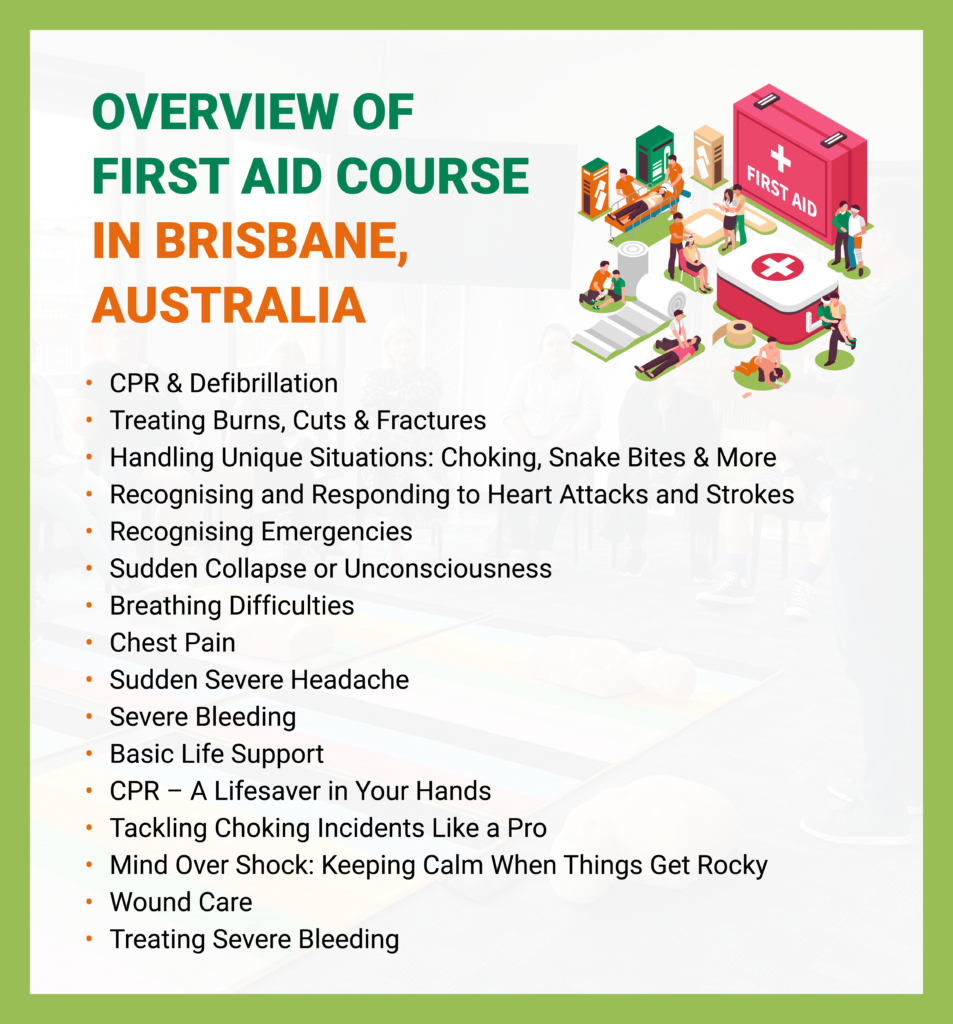
Last but not least, fractures – whether it’s a twisted ankle from footy or someone took ‘break-a-leg’ literally at their drama audition – learn all about splinting techniques here.
Handling Unique Situations: Choking, Snake Bites & More
Surely there isn’t anything much worse than choking on mum’s Sunday roast or getting bitten by some sneaky snake while camping? Well, luckily for us Aussies, this course has us covered.
Our training includes how to clear an obstructed airway and deal with snake bites. No more running around like a chook with its head cut off when emergencies strike.
Recognising and Responding to Heart Attacks and Strokes
We all know someone who’s had a heart attack or stroke. They’re not picky – they can happen anywhere at any time.
That’s why it’s so important for you to be able to recognise the signs and respond swiftly.
Key Takeaway:
Get ready to be emergency-savvy with our comprehensive First Aid Course Brisbane. You’ll master CPR and defibrillation, learn how to treat burns, cuts, and fractures, handle unique situations like choking or snake bites, and respond effectively to heart attacks & strokes. No more panic during emergencies.
Recognising Emergencies
Being able to recognise an emergency is the first step in providing effective first aid. But what does a real-life medical emergency look like? It might not be as dramatic as on the telly.
Recognising the indicators of a medical emergency is essential to ensure life-saving action can be taken. Realising these signs can be the variation between living and dying.
Sudden Collapse or Unconsciousness
If someone suddenly collapses or loses consciousness, it’s a clear sign of an emergency. This could indicate cardiac arrest, stroke, or other serious health issues that need immediate attention.
To respond effectively, call triple zero (000) in Australia immediately and provide CPR if necessary until help arrives.
Breathing Difficulties
A person having trouble breathing may gasp for air, wheeze loudly, cough excessively, or even struggle to speak. These are classic signs of respiratory emergencies such as asthma attacks or choking incidents.
Your training will let you handle this situation properly by assisting with medication usage (like inhalers), and performing back blows and abdominal thrusts in case of choking.
Chest Pain
Chest pain should never be taken lightly because it could signal heart problems – think heart attack.
If chest pain occurs alongside shortness of breath, nausea, lightheadedness, and discomfort in arms/back/neck/jaw/stomach, then get onto 000 straight away.
Sudden Severe Headache
This isn’t about your average headache from too many beers at the pub last night. A sudden severe headache can be a sign of stroke or aneurysm, both needing urgent medical attention.
If the headache is accompanied by dizziness, vision changes; trouble speaking or understanding speech; or loss of balance/coordination, then don’t hesitate to call emergency services for help.
Severe Bleeding
Despite your best efforts with pressure and bandages, a cut that won’t stop bleeding signals an emergency response situation.
You might need more advanced first aid techniques like tourniquets.
Getting to know these signs is key. It’s like learning a new language, but this one can help you navigate through life more effectively.
Key Takeaway:
Spotting a medical emergency might not be as dramatic as what you see on TV. Recognising the signs – from sudden collapse, breathing difficulties, and chest pain to severe headaches or unstoppable bleeding – can make all the difference between life and death. So, it’s crucial to learn this ‘language’ of emergencies through first aid training.
Assessing the Situation
The first step in order to provide basic emergency life support is to assess the situation. This can feel like a puzzle, but with training here from our First Aid Course Brisbane, you’ll have the tools to solve it.
A crucial part of this process involves deciding if it’s safe for you to give help.
Rushing into a scene without considering potential dangers could make things worse and put more lives at risk.
Understanding Danger
You must understand what constitutes danger before entering an accident scene. Could there be traffic? Is there smoke or fire nearby?
What about aggressive people or animals?
All these factors need consideration when making that all-important decision: ‘Can I safely provide help here?’ If not, stay back and dial 000 immediately.
Determining Responsiveness
Once safety is established, check if the person involved needs your help. Are they responsive? Do they respond when spoken to or touched gently on their shoulder?
If yes, then ask them questions about how they’re feeling – pain location or intensity – as this info helps guide your next steps in giving first aid. Knowing signs of shock, for example, could mean faster treatment delivery and better outcomes.
Gathering Information From Bystanders
- Bystanders can often offer valuable information about what happened just before an incident occurred.
- This might include details such as whether someone fell off a ladder (potential spinal injury) or ate something unusual (possible poisoning).
- Pulling together bits of info will give you a clearer picture of what aid to give.
- Just remember that every bit of information can make a significant difference in the person’s recovery journey.
Prioritising Treatment
After sizing up the situation and collecting all necessary info, figure out which injury can’t wait. This is when your first aid skills really come into play.
Key Takeaway:
Get ready to handle any emergency with confidence. From assessing the situation and recognising potential dangers to checking responsiveness and gathering vital info from bystanders – our First Aid Course Brisbane gives you the skills needed. It’s all about making smart decisions quickly that can help save lives.
Basic Life Support
Let’s get real, mate. Beneath the surface of its moniker, basic life support is a critical skill that can be the ultimate arbiter between living and dying.
Knowing how to give CPR, handle choking incidents, or manage shock could mean you’re someone’s hero one day.
CPR – A Lifesaver in Your Hands
CPR (Cardiopulmonary Resuscitation), as scary as it sounds, isn’t rocket science. It’s about pushing hard and fast in the centre of a person’s chest while giving rescue breaths.
Doing this might seem daunting, but remember – any attempt at resuscitating someone who has suffered a cardiac arrest is better than no attempt at all. Plus, our first aid course Brisbane gives you plenty of hands-on practice, so you’ll feel more confident if the need arises.
Tackling Choking Incidents Like a Pro
The steak was too good to resist, but then…coughing, gasping for air – signs that your mate may be choking.
No worries, though. You’ve got this because our training includes learning how to react quickly when someone starts choking.
From delivering back blows and abdominal thrusts correctly to calling an ambulance promptly if needed – we’ve got everything covered.
Mind Over Shock: Keeping Calm When Things Get Rocky
If there’s one thing unpredictable about emergencies like accidents or sudden illness, it’s shock.
But we’re not talking about the ‘oh my God’ kind of shock – this is a life-threatening condition that needs immediate help.
In our First Aid Course Brisbane, you’ll learn how to recognise signs of shock, like rapid pulse and cool, clammy skin.
You’ll also get skilled at managing it by laying the person down with their legs raised (if possible), keeping them comfortable, and waiting for medical assistance.
Key Takeaway:
Don’t just be a bystander; become someone’s hero. Learn to deliver CPR effectively, tackle choking incidents like a pro, and keep calm when shock sets in with our first aid course Brisbane. Because you never know when these life-saving skills might come in handy.
Wound Care
Caring for wounds is a critical skill that can make all the difference to aid emergency. Taking a cursory approach to wound care is not enough – it requires knowledge and skill.
Understanding Different Types of Wounds
First, let’s chat about different types of wounds. We have cuts, grazes, punctures, and burns. Each needs its own kind of care.
A cut or graze, though often minor, still requires attention to avoid infection. Punctures are tricky buggers because they might look small but can be deep with potential internal damage.
The Golden Rules of Wound Care
You’ve got some golden rules when it comes to wound care: clean, protect and monitor. And nope, we didn’t pull this out from under our hat – these are recommended by health professionals globally.
- Clean: Always clean the wound gently with warm water and mild soap, if available, before dressing it up.
- Protect: Use dressings like bandages or plasters after cleaning to shield your boo-boo from dirt & bacteria, which love open skin (yuck.). A protective barrier also helps speed healing by keeping things moist – who knew?
- Monitor: Keep an eye on how your wound heals over time. If you notice signs like increasing pain, redness, or pus, then get medical help ASAP, as these could signal infection.
Treating Severe Bleeding
But what if the wound is severe and bleeding heavily? That’s where your first aid training really kicks in.
To control heavy bleeding, apply direct pressure to the wound using a clean cloth or bandage. But be warned – this isn’t for the faint-hearted, as it may need some force.
If possible, raise the injured area above heart level – gravity will help slow down blood flow. This ain’t rocket science, but good ol’ physics is working its magic.
Key Takeaway:
First aid goes beyond just slapping on a bandage. It’s about understanding how to properly treat various injuries, such as cuts, grazes, punctures, and burns. Keep these key rules in mind: gently clean with warm water and soap; shield the wound using dressings to block dirt and bacteria; keep an eye out for infection signs. If there’s severe bleeding, use a clean cloth or band to apply pressure.
Burns Treatment
Handling burns correctly can make a world of difference. It’s about understanding the proper procedure and, even more importantly, what not to attempt.
Identifying the Type of Burn
The first step is identifying the type of burn. Determining the severity of the burn, whether it be superficial (first-degree), partial-thickness (second-degree), or full-thickness (third-degree), is essential for proper treatment.
A good understanding of these types helps in giving appropriate treatment.
A first-degree burn only affects the skin’s outer layer with symptoms like redness and minor inflammation.
Second-degree burns extend to deeper layers, causing blisters and severe pain. Full-thickness burns affect all layers of skin, leading to charring or white areas.
Treating Superficial Burns at Home
If you’re dealing with a superficial burn, cool running water should be your best mate for 20 minutes minimum, but avoid ice. Then, cover it up neatly with some cling wrap or a clean cloth.
Caring for Partial-Thickness Burns
In case you’ve got yourself into trouble with second-degree burns, call Triple Zero immediately while starting cooling under running water as above.
Moving on From Cooling…
- There is no need for any home remedies here – they could worsen things, actually. So, skip butter or toothpaste despite grandma’s advice.
- Never burst those blisters – leave them alone because breaking them makes way for infection.
We recommend using over-the-counter relievers if pain persists, but only as directed.
Handling Full-Thickness Burns
A full-thickness burn is no joke. You’ll need professional help for this one – dial 000 right away and perform CPR if necessary.
- Try not to cool the area because it can lead to hypothermia due to large skin areas being affected.
Poisoning Management
Recognising the signs of poisoning is crucial, as every minute can make a difference. It’s not always obvious, but knowing what to look for will let you react quickly.
Symptoms of Poisoning
Varying signs may be present depending on the poison and amount consumed, such as nausea, difficulty breathing, or loss of consciousness.
Some common indicators include vomiting, difficulty breathing or unconsciousness.
If in doubt about whether someone has been poisoned, don’t delay in enquiring if they have had an adverse reaction after ingesting something peculiar or taking a medication of unknown origin.
Action Steps in Case of Poisoning
When it comes to dealing with potential poison cases, quick action is essential. Here are some steps that might help:
- Contact Emergency Services: Dial 000 immediately if you suspect someone has been poisoned. They’ll guide your next actions while help is en route.
- Stay Calm: Maintaining composure helps keep everyone else calm too – which could be critical in such situations.
CPR may be Necessary
In severe cases where the victim loses consciousness due to poisoning and isn’t breathing normally or at all, provide Cardiopulmonary Resuscitation (CPR) until professional medical assistance arrives.
Avoid Inducing Vomiting unless Instructed by Professionals
We’ve heard this advice often enough: induce vomiting when somebody swallows poison. But hold up.
That’s not always the best course of action because certain substances can cause more harm if vomited up.
Always wait for instructions from a healthcare professional before taking such steps.
Prevention is Key
We can’t always prevent accidents, but we can definitely reduce the risk of poisoning incidents with some simple measures:
- Stash Away Dangerous Items: Always store your cleaning supplies and medicines up high where they’re out of reach.
Key Takeaway:
Recognising the signs of poisoning, like vomiting or difficulty breathing, is critical. If you suspect someone’s been poisoned, stay calm and dial 000 straight away. Don’t induce vomiting unless instructed by a healthcare professional, as it can sometimes cause more harm.
Fracture Management
If you’re like most people, the word ‘fracture’ sends a shiver down your spine. But fear not. With some basic first aid skills, you can provide crucial help in such situations.
Splinting: The First Line of Defence
A splint serves to stabilise a fracture and reduce pain. Think of it as a supportive friend who holds your hand when things get tough – only here, it’s holding bones together.
It’s important to use what’s on hand; materials such as cardboard or magazines will do in an emergency.
The Art of Immobilisation
Beyond splints, immobilising the injured area is critical. This means telling the casualty to stop moving that body part – kinder than saying “freeze.” but with similar intent.
Immobilisation helps prevent further injury because the excessive movement can turn a bad break into something much worse (and nobody wants that.).
All Aboard for Safe Transport Techniques.
Moving someone with a fracture requires a special care setting – imagine transporting an egg without cracking its shell any more than it already is. You need steady hands and plenty of patience.
- Casualties should be moved gently and slowly. Quick moves might seem efficient, but they risk causing more harm.
- If possible, call professional medical services for transport assistance – just dial 000 if you’re ever unsure.
- In certain cases where immediate evacuation is needed (Healthdirect Australia gives examples like natural disasters), you may have to take the risk and move them yourself. But remember, slow and steady wins this race.
The skills taught in our first aid course are just like having a secret superhero power – one that can help people when they need it most.
It’s time we all added ‘Fracture Management’ to our life skillset.
Key Takeaway:
Don’t panic at the word ‘fracture’; with first aid know-how, you can give vital help. A splint stabilises and eases pain – use whatever’s around. Keep the injured area still to stop more damage, and move casualties gently if needed.
FAQs in Relation to First Aid Course Brisbane
Is a first aid course worth it?
Absolutely, first-aid training courses equip you with life-saving skills. Plus, they often meet workplace requirements in Australia.
Can I do a first aid course online learning in Australia?
Sure thing. Many nationally recognised training providers like My First Aid Course Brisbane offer accredited online learning for first-aid courses that suit your schedule right here in Brisbane.
How long is a first aid course?
The length varies based on the depth of training, but typically an initial comprehensive course takes about 1 to 2 days.
Why My First Aid Course Brisbane is Your Essential Safety Net
First aid isn’t a superhero’s job – it’s yours. It’s as simple as that. With the first aid course from My First Aid Course Brisbane, you’ve got this.
You’ll spot emergencies before they escalate and handle them like a pro. Your hands will be steady with wound care knowledge and CPR mastery in your back pocket. They’re not just skills – they’re lifelines for those who need help most.
Burns, fractures, or poisoning? You’ll be prepared to act quickly and decisively in a crisis.
If you’re primed to really make an impact when it matters, now is your opportunity. Contact My First Aid Course to secure your spot today. Go get ’em!

